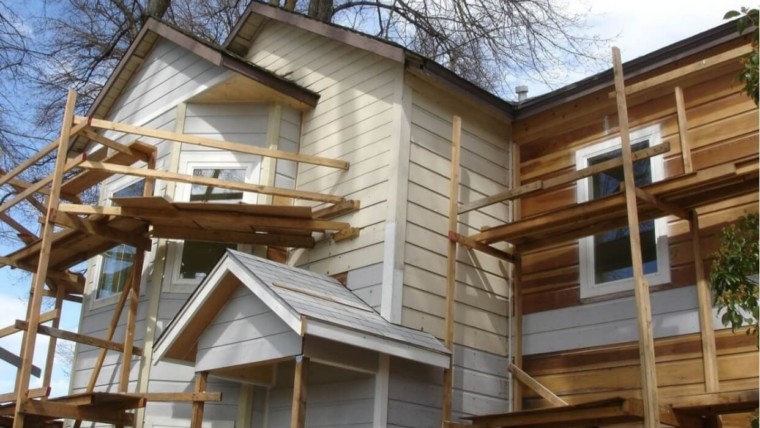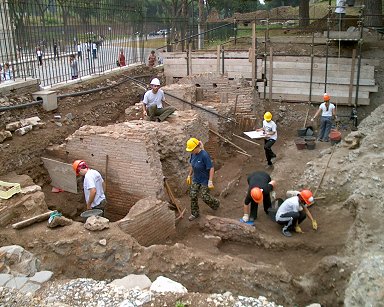Get the most out of your HVAC, without breaking the bank on your heating bill. With the colder weather, you’ll want to be sure that your dollars are going towards heating your home in the most effective, efficient, and inexpensive way possible, and for that, you need an HVAC professional. Luckily, we’ve called in the Hometalk experts at Woodbridge Environmental Tiptop House to give you a thorough list of what needs fixing, maintaining, and adjusting, so that you can get the best coziness for the best cost.

1) Now that it’s cooler outside, how can I keep my heating bill reasonable without freezing?
To keep heating bills reasonable this winter, you need to have your system serviced. Cleaning and evaluations of your equipment are essential for having your heating system operate properly with no breakdowns or safety concerns.
Servicing will be dependent upon the type of heating system you have. But there are things that you as the homeowner can do to keep your service costs to a minimum, save money, and lower the likelihood of a breakdown over the colder months.
-
Change batteries on your thermostat if they use them.
-
Upgrade your thermostat if it’s older
Some newer ones allow you to control your heating and cooling, provide you with reports on usage, and inform you when it’s time to change the filter or when the system is starting to fail. You can do it all from your smart phone or wherever you have access to the internet. Many of these can be purchased for a few hundred dollars at the local big box apron stores and are easily installed by the homeowner in about 20 minutes.
-
Change your filters
The biggest cause of service calls is a dirty filter, for both heating and cooling. You should ideally have your heating professional install a HEPA filter system. They are expensive, but help clean and sanitize the air. This results in more comfort, less cleaning, and better overall efficiency of the system you have installed.
-
Seal air leaks on duct system
Testing indicates that an approximate average of 30% of your heating or cooling is leaking and lost out of the ducts, and never making it to the rooms that you’re trying to heat and cool. This is like having a heating system that is 30% smaller, but you are paying the fuel use of a larger unit. Duct sealing is easy. Using a UL approved foil tape that has a rubber sealant or duct mastic, which is much like a really heavy paint, you simply cover all the duct joints and seams to prevent the air from leaking out. This includes around flex duct connections, around the start collars where the branch ducts fasten to the main trunk duct, and around the furnace as well. This is not going to look like a thing of beauty when you are done, but you will smile when you see the increased comfort in the house and the ability to better balance your air.
-
Insulate the air delivery system
If your duct system is located in a crawl space that is vented, or within an attic area, seal as above and insulate the ducts. R-8 at a minimum is suggested, but use more if you can. Duct insulation comes in bubble wrap form or in roll form that is about a half or one inch thick. The fiberglass type has a foil backing. It’s important to use foil tape when using this type of insulation and seal any openings and joints were the insulation overlaps. Remember if the ducts are exposed to the outside temps during the winter and it is cold outside, you will notice that the air temps that come into the room will be much warmer when it’s insulated than when it’s not.
-
Air seal and insulate your home.
2) What are some signs of an old HVAC unit?
Increased service calls and frequent breakdowns are signs that it is time to start looking at a new heating or cooling system. Increase in noise is another one. If your home was constructed about the same time as the rest in your area and you are beginning to see more and more HVAC service trucks parked in your neighbors’ driveways, this can be a sign that you’re not too far behind them.
But does this mean you must replace your system? No, it only means you need to be prepared to provide additional service and expect an emergency service call on occasion when you least expect it. Most utility companies and oil suppliers offer low-cost service warranties. You can also simply check with a local HVAC contracting firm. But make sure to compare what is offered. They range in service availability, what they cover, and cost.
3) When are the best and worse times to run your HVAC unit? And what is the cost analysis of doing so?
The times to run your heating and or cooling system is dependent upon the system that you have and how it’s powered to operate. Other factors can determine this as well, such as insulation, air sealing, size of area being heated or cooled, and efficiency of the system and fuel type.
In the northeast, electrical rates are quite high, so anytime the system is not run, the lower the overall cost of operation becomes. However, there are newer heating and cooling systems called mini-splits that have become quite popular in recent years with efficiency ratings much higher than the normally installed fueled fired furnace with cooling system combined. Also, these newer systems only need to be operated in the area that you’re occupying, instead of the entire home, which is norm in most duct heated and cooled homes. These systems are the ultimate in comfort and energy savings, but they are expensive to purchase and install as compared to the types with which we’re all familiar. But with modern homes becoming larger and larger, and with it becoming more difficult to run heating and cooling ducts to these far away located rooms, the mini-split systems that are self-contained have found their niche in the market. They solve issues that normally would require a lot of changes in duct designs and zoning as well as increases in equipment sizing.
To combat the mini-split industry, manufacturers of furnaces and split AC systems are designing variable speed and full modulating heating and cooling equipment. These new systems vary the amount of air and fuel they require based upon the load needed to heat or cool a structure. Add to that zone damping, and you end up with a low operational cost system. Combined with proper load calculations and duct designs, newer systems are more efficient and offer greater control of the rooms comfort level, all while saving the consumer a lot of money.
Cost savings on new equipment as compared to the cost of replacing old equipment will vary depending on many factors. Many folks are fooled into thinking that installing that new, high-efficiency cooling system or heating system will save them hundreds or even thousands of dollars. But they will be sadly disappointed. As an example, you can install a 96% efficient furnace replacing an old 70% natural draft system. You would think you would experience a 26% increase in savings on fuel savings, but when you factor in the poor quality duct system with leaks at every joint, combined with lack of insulation on duct systems located in attics or outside wall cavities, you will be lucky to get an overall efficiency of 80%. But install a 80% furnace at a lower installation savings and put that difference from the 80% and the 96% costs into duct improvements, some house air sealing, and insulation, and your overall efficiency will end up being very close to that 80% furnace overall delivery rate that the furnace can deliver.
These super high-efficiency full modulating furnaces are designed with new duct systems and proper house air sealing and insulation in mind. If you are thinking to install one, be prepared to upgrade your existing air supply system, install a zone damper system, air seal your home, and add insulation to get the full benefit out of the equipment. If you are not prepared to do this, then simply install an 80% system and save your money.
Installing a new high-efficiency heating and cooling system without doing all the other extras required is like installing a racing motor in your Kia. Sure it will work fine, and it will get you to the next red light faster than everyone else, but you will end up spending a lot more money without any real benefits other than a faster car and a bunch of burnt up tires.
For more genius advice and helpful tips from Hometalk Professional Woodbridge Environmental Tiptop House, check out their profile page and follow them on Hometalk.
Hometalk Experts are standouts in their industry and provide trusted advice on home improvement and gardening projects. Experts include reputable interior designers, painters, contractors, craftsmen and real estate professionals. Hometalk Experts are an active part of Hometalk's community, answering individual questions and providing inspiration through their own completed projects.

















